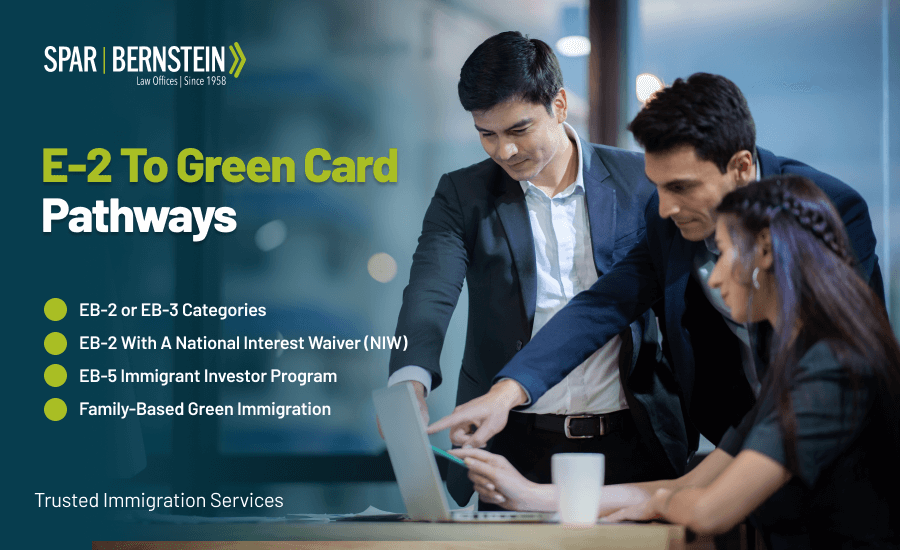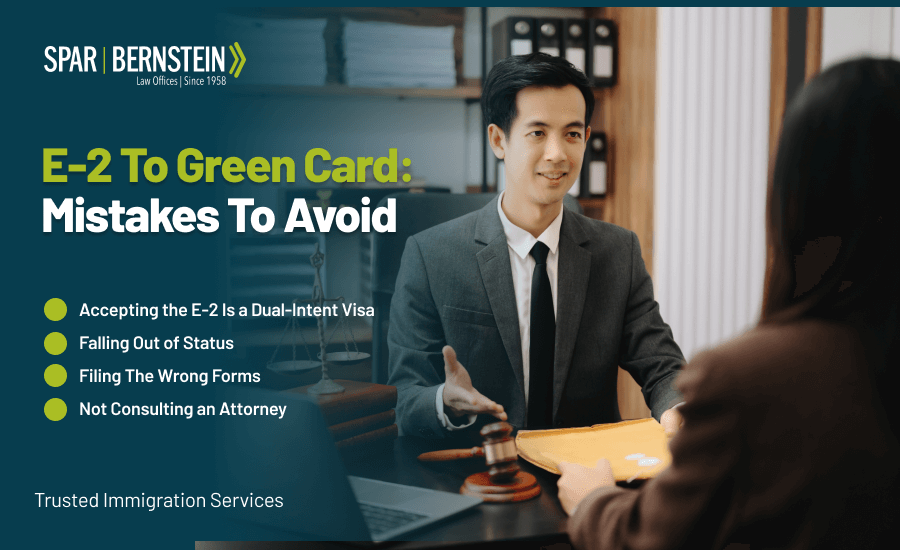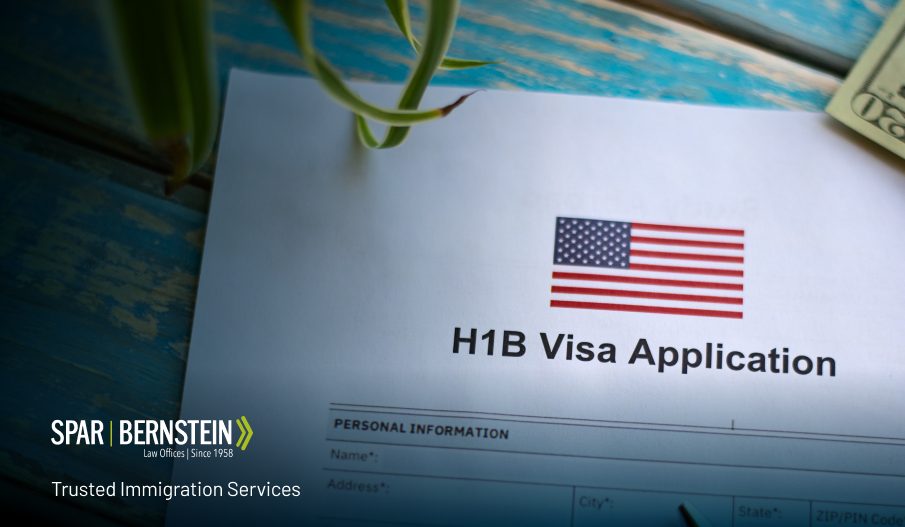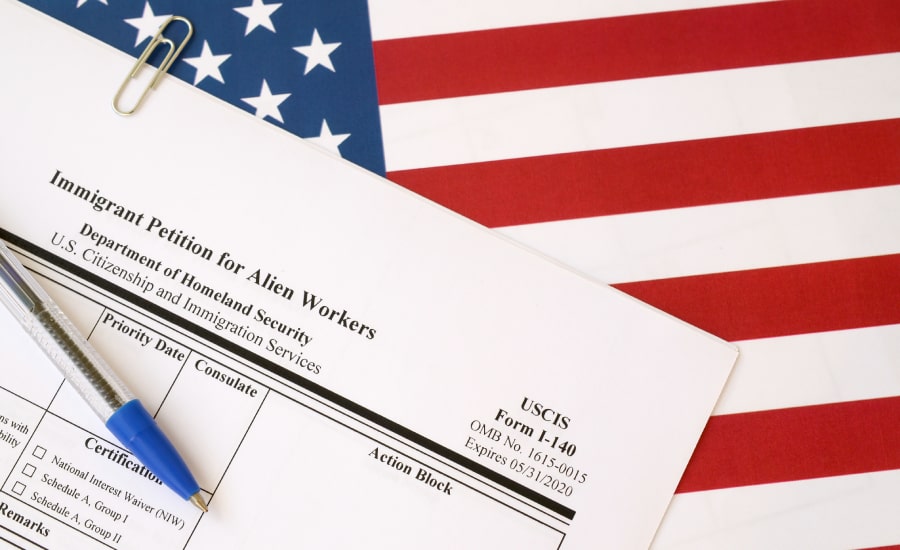

E-2 Visa To Green Card: Key Points
- Transitioning from an E-2 visa to a Green Card can happen via several different paths: switching to EB-2 or EB-3 category, applying for EB-2 with National Interest Waiver, through the EB-5 Immigrant Investor Program or if a family member petitions for you
- EB-2 and EB-3 categories typically require a job offer, labor certification, and employer sponsorship
- You can self-petition under the National Interest Waiver (NIW) without a job offer if your work benefits the U.S.
- The EB-5 investor visa requires significant investment and job creation
- You can pursue a Green Card through family sponsorship, if you are married to a U.S. citizen, or if you have other immediate relatives who can sponsor you
- Processing times vary by category, ranging from several months to several years
Do you want to apply for a Green Card after an E-2 visa to protect your business, legal status, and your right to stay in the United States?
Let’s explore how you can do this in 2025.
Read on to find:
- How to transition from an E-2 visa to a Green Card
- What processing times to expect
- What pitfalls to avoid
How To Transition From An E-2 Visa To A Green Card: 4 Proven Paths & Their Requirements
As a nonimmigrant visa that allows nationals from treaty countries to work in the U.S. based on a substantial U.S. business investment, the E-2 visa does not offer a direct path to a Green Card.
However, if you want to remain in the U.S. and pursue a Green Card (with the respective benefits), you can apply for an immigrant visa.
Here are the main pathways you can use:
1. Transitioning To An Employment-Based Green Card (EB-2 or EB-3)
One of the options is to switch to an employment-based category such as EB-2 or EB-3.
- The EB-2 visa is for individuals with a master’s or higher degrees or ones with exceptional ability in the sciences, arts, or business. Its aim is to attract top talent that can benefit the U.S. economy.
- The EB-3 visa is for professionals with a bachelor’s or higher degree or skilled workers with a minimum of two years’ training or experience.
Both EB-2 and EB-3 typically require:
- A job offer and employer sponsorship.
- Permanent Labor Certification (PERM) to prove there are no qualified U.S. workers for the respective position.
- Filing Form I-140, Immigrant Petition for Alien Worker with the U.S. Citizenship and Immigration Services (USCIS).
- Filing Form I-485, Application to Register Permanent Residence or Adjust Status, to change their status.
2. EB-2 With A National Interest Waiver (NIW)
There’s one important exception for the EB-2 category: the NIW, which applies to individuals who can prove that their work can benefit the U.S. economy, government agencies, and sustainability.
For example,
- Environmental scientists working on carbon capture technologies.
- Public health workers improving healthcare access in rural communities.
- AI developers creating machine learning models to enhance cybersecurity infrastructure for U.S. government systems.
NIW applicants don’t need a job offer and can self-petition to become lawful permanent residents (Green Card holders).
3. EB-5 Immigrant Investor Program
Another option is the EB-5 Immigrant Investor Program, which allows qualifying investors to apply for a Green Card.
If you have enough funds, you can manage your U.S. business on an E-2 visa while applying for an EB-5 Green Card, provided you meet the EB-5 visa requirements:
- Investing $800,000 in a targeted employment area (TEA) or $1,050,000 in a general area.
- Creating or retaining ten full-time jobs for U.S. workers.
Let’s say you’re a tech entrepreneur on an E-2 visa. You decide to invest $1,050,000 in a U.S. software company and hire 12 full-time employees.
Your investment meets the EB-5 requirements, and you can apply for a Green Card through the EB-5 Immigrant Investor Program while continuing to run your business.
4. Family-Based Green Card
You may pursue a Green Card through family sponsorship if you have an immediate relative who is a U.S. citizen or Green Card holder.
The most common scenario is marriage to a U.S. citizen, which allows you to adjust your status while in the U.S., even if you came to the country with a nonimmigrant visa.
The process includes concurrent filing of:
- Form I-130, Petition for Alien Relative
- Form I-485
If you marry a lawful permanent resident, you must wait for a visa to become available before you can apply for a Green Card.
Other relatives who can sponsor you for a Green Card include:
- A U.S. citizen parent
- A U.S. citizen sibling (brother or sister)
- A U.S. citizen child age 21 or older

E-2 Visa To A Green Card Processing Time
The application processing time can vary depending on the category under which you’re applying. For example, here’s what to expect if you choose the employment-based path:
- Extraordinary ability category: 15 months.
- Advanced degree and exceptional ability category: Between 7 and 10 months.
- Skilled worker or professional category: 6 months.
- NIW category: Between 12 and 16 months.
For family-based applications, the timeline will differ depending on your relationship to the sponsor. Read more about different scenarios in our detailed guide.
Mistakes To Avoid When Transitioning From E-2 To A Green Card
E-2 to a Green Card can be challenging due to the variety of paths available. Below, you can take a look at what to avoid.
Accepting E-2 As A Dual-Intent Visa
Unlike H-1B or L-1 visas, the E-2 visa does not permit dual intent, meaning you should be ready to leave the U.S. when your visa expires.
Failing To Maintain E-2 Status During The Green Card Process
Maintaining a valid E-2 status is key. If your visa expires and USCIS denies or delays your adjustment of status, you can lose your right to remain in the U.S. and face removal proceedings.
Filing The Wrong Forms
Each pathway, from EB-2 and EB-3 to a family-based Green Card, requires filling out different forms and supporting documents.
Filing the wrong form or failing to provide required evidence like investment proof, job creation data, or relationship documentation can lead to:
- Delays in processing your application
- Requests for Evidence (RFE)
- Denials
Ignoring Visa Bulletin Information
Meeting the eligibility criteria in your category is not sufficient. In some cases, you will need to wait for a visa to become available, and the process may take longer depending on your country of origin.
Consulting and understanding visa bulletin gives you crucial information on the expected wait times for a Green Card.
Not Consulting An Immigration Attorney
You might think you can manage the transition alone, but this is not always the case. Immigration law is complex and involves various hypotheses, eligibility requirements, and supporting documentation.
Not having an experienced lawyer by your side may lead to filing incorrect applications, violating your current visa terms, and increasing the risk of deportation if you fall out of status.

E-2 Visa To Green Card: Key Takeaways
- The E-2 visa doesn’t directly lead to a Green Card, but several legal options can make the transition possible.
- Employment-based Green Cards like EB-2 or EB-3 often require a job offer and employer sponsorship.
- The NIW allows you to self-petition without sponsorship if your work serves the national interest.
- If you have enough resources for investing in the U.S. economy, you can use the EB-5 program to apply for a Green Card.
- Another way to transition from an E-2 to a Green Card is through family-based immigration.
Looking To Transition From An E-2 Visa To A Green Card? Spar & Bernstein Can Help
One goal, with so many ways to reach it. Does it sound overwhelming?
Spar & Bernstein has a team of experienced and compassionate attorneys that can ease the stress of the transition.
Our lawyers will:
- Identify the best path for transitioning from E-2 to Green Card
- Prepare and file the required forms and evidence
- Represent you before USCIS for any immigration-related issues
- Help you prepare for the Green Card interview
“Transitioning from an E-2 visa to a Green Card isn’t a one-size-fits-all process,” says Brad Bernstein, Managing Partner at Spar & Bernstein. “With immigration policy and visa categories constantly changing, working with an experienced law firm like ours is key to secure the best outcome for your case.”
E-2 Visa To Green Card: FAQs
Looking for more information about E-2 visa to Green Card? Take a look at the section below.
Do I need a job offer to apply for a Green Card from an E-2 visa?
You don’t always need a job offer to apply for a Green Card. For example, if you choose the EB-5 investor visa or the EB-2 NIW paths, you’ll be able to self-petition without employer sponsorship.
Can my family members get Green Cards if I transition from an E-2 visa?
Yes, when you transition to a lawful permanent resident status, your immediate family members (spouse and unmarried children under 21) can apply for Green Cards as derivative applicants.
Can I apply for NIW if I have an E-2 visa?
You may be eligible for NIW if your contributions in fields like science, technology, or business can benefit the United States’ national interest.













